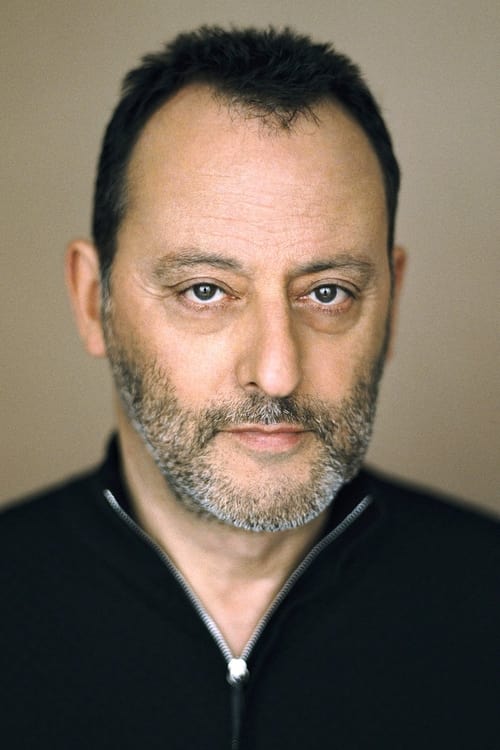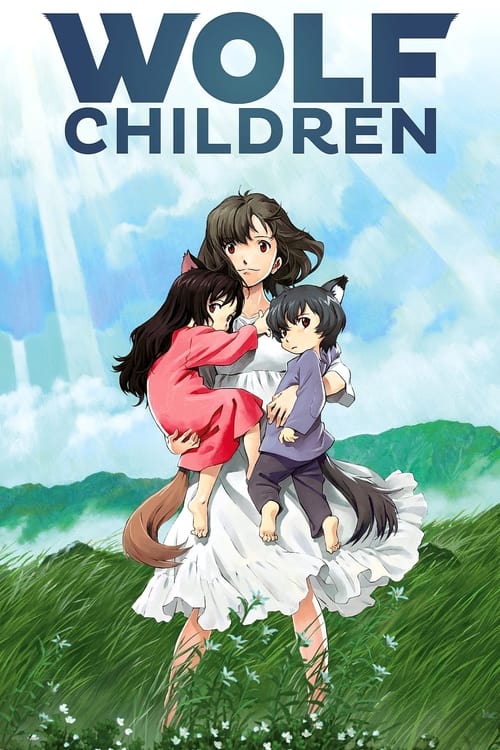
Léon: The Professional
Léon, the top hit man in New York, has earned a rep as an effective 'cleaner'. But when his next-door neighbors are wiped out by a loose-cannon DEA agent, he becomes the unwilling custodian of 12-year-old Mathilda. Before long, Mathilda's thoughts turn to revenge, and she considers following in Léon's footsteps.
Dialogues from Movie Léon: The Professional
Quotes from Movie Léon: The Professional
Sound Tracks from Léon: The Professional by Eric Serra
Shape of My Heart
Shape of My Heart by Sting, Played during the emotional scenes between Léon and Mathilda
Cafe' O' Lait
Cafe' O' Lait by Eric Serra, Used in various scenes to set the mood
Léon: The Professional (Main Theme)
Léon: The Professional (Main Theme) by Eric Serra, Main theme of the film, present in key moments
Download App
Memorable Scenes from Movie Léon: The Professional
The Awakening
Léon meets Mathilda for the first time when she knocks on his door seeking refuge. Initially reluctant, Léon is moved by her innocent plea. This moment sets the foundation for their complex relationship. It’s a turning point as Léon goes from a solitary hitman to someone who starts to care for another person. Their initial awkward interactions are filled with both tension and warmth.
Context: Léon, a hitman living a reclusive life, finds his routine disrupted when Mathilda—a young girl in desperate need of help—knocks on his door. This moment introduces the audience to the unexpected bond that will develop between the two.
The Training Begins
In a series of mentorship moments, Léon trains Mathilda in the art of assassination. The scene is impactful as we see Mathilda's determination and Léon's reluctant acceptance of his role as a protector. Their dynamic shifts from merely protector-protégé to something deeper, as Mathilda begins to mirror Léon’s cold efficiency.
Context: After the traumatic loss of her family, Mathilda decides to seek revenge. She persuades Léon to teach her about his life as an assassin, which signifies her transformation and the weight of their bond.
The Growing Bond
Mathilda asks Léon why he has never had a ‘normal’ life or loved anyone. Léon's guarded responses reveal his emotional scars and past traumas. It’s a moment of vulnerability for him, exposing his loneliness and stirring feelings in both characters. This conversation solidifies the shared emotional pain and responsibility they feel toward each other.
Context: As they grow closer, Mathilda’s innocent curiosity about Léon’s life pushes him to confront his past, adding layers to his character while deepening their relationship.
The Price of Vengeance
Mathilda finally confronts the ruthless DEA agents responsible for her family’s murder. In a moment of fury and resolve, she takes her first killing shot. The scene is jarring, as it flips the innocence of her character on its head, showing how far she's willing to go for vengeance. The act itself is a turning point for both her and Léon.
Context: Mathilda, fueled by rage and grief, tries to enact her revenge on the agents, showcasing her transformation from a naive girl to a hardened individual who has embraced violence.
The Offer
When Mathilda offers to give herself to Léon in a moment of desperation, it raises questions of their relationship dynamics. Léon's refusal is heartbreaking; it shows his desire to protect her innocence, even when faced with emotional temptation. This scene highlights Léon's struggle between his feelings for Mathilda and his instinct to keep her safe.
Context: As Mathilda tries to navigate her feelings and trauma after the loss of her family, this moment blurs the lines of love, friendship, and protection, intensifying their already complex relationship.
Fate of the Innocent
After a tense confrontation with the authorities, Léon chooses to sacrifice himself to ensure Mathilda escapes. In the climactic standoff, Léon’s fate is sealed while protecting the one person he truly cared for. His quiet determination is both heroic and tragic, making this moment deeply emotional.
Context: As the story builds towards its climax, Léon realizes that Mathilda must survive without him, encapsulating his growth from a heartless killer to a loving protector.
Mathilda’s Choice
At the end of the film, Mathilda is left with the choice of continuing her life or seeking revenge. She recalls Léon’s teachings and ultimately decides to pursue a future that honors his legacy. This pivotal moment showcases Mathilda’s growth and the influence Léon had on her, marking her transition from loss to hope.
Context: In the aftermath of tragedy, Mathilda’s decision reflects her internal struggle and the impact Léon’s mentorship had on her, fostering her resilience.
The Final Goodbye
Léon’s last moments displaying calmness and acceptance as he faces his end is heart-wrenching. He shares a final exchange with Mathilda, expressing hope for her future. The emotional weight of his sacrifice resonates deeply, leaving a lasting impression on the audience.
Context: As the film approaches its conclusion, Léon’s acceptance of his fate shows his transformation, magnifying the emotional depth of his character and highlighting the impact of his relationship with Mathilda.
The Hitman’s Code
In a gripping scene where Léon instructs Mathilda on the professional ethics of being a hitman, he discusses the importance of not letting emotions cloud judgment. This lesson captures the morose reality of his world while showcasing Léon’s desire to protect Mathilda from becoming a monster.
Context: As Mathilda learns about the darker aspects of Léon’s life, this moment illustrates her growing acceptance of that world while highlighting Léon’s intentions for her wellbeing.
The Confrontation with Stansfield
The dramatic confrontation between Léon and Stansfield unfolds with incredible tension. Stansfield, portrayed as a menacing figure, pushes Léon into a corner, and the contrast highlights Léon’s capacity for both violence and restraint. This climactic confrontation is a testament to Léon’s character arc as he finally asserts control over his life.
Context: With the looming threat of Stansfield, this scene encapsulates the conflict between beauty and darkness that permeates the film, underscoring Léon’s journey toward reclaiming agency.
Breaking Down Walls
When Mathilda finally teaches Léon to express himself by asking about his feelings, the scene is beautifully awkward yet tender. This moment showcases the gradual dismantling of Léon’s emotional walls and serves as a vital step in their relationship evolution.
Context: Mathilda’s determination to connect with Léon represents her hope and innocence, creating a contrast against the horrific backdrop of their lives.
The Dance of Helplessness
Léon’s visit to the supermarket where he is seen performing everyday tasks while still being a highly skilled assassin creates a strong juxtaposition. In a mundane environment, his vigilant presence serves to highlight the loneliness of his existence.
Context: This moment captures Léon’s character, showcasing the simplicity of his routine life while hinting at the complexity of his inner emotions.
Lessons on Survival
During a pivotal moment, Léon teaches Mathilda how to hide and survive in dangerous situations. He emphasizes the importance of protecting oneself, revealing the harsh realities of their lives. This serves as a powerful lesson and shows Léon's reluctant acceptance of his role as a mentor.
Context: This scene emphasizes the stark reality of their environment while reinforcing the bond of trust and safety he builds with Mathilda.
Moments of Joy
A rare lighthearted scene where Mathilda tries to get Léon to smile showcases the innocence of childhood amidst the surrounding chaos. Their banter and attempts at camaraderie serve as a poignant reminder that joy can be found even in dark circumstances.
Context: Emphasizing the fragility of happiness, this moment highlights the juxtaposition of their tragic lives with fleeting moments of joy.
The Lonely Window
As Mathilda watches Léon from the window after a confrontation, her longing and admiration is palpable. The camera lingers on her face, capturing a myriad of emotions—love, fear, and admiration. This visual encapsulates her feelings for Léon and their budding relationship.
Context: This moment underscores the tension between their developing emotions and the harsh realities they face, deepening the complexity of their relationship.
The Revelation of Love
When Mathilda admits her love for Léon, the emotional weight of the moment strikes hard. It confronts the peculiar nature of their relationship, registering both innocence and an unsettling reality. Léon’s response is layered with confusion but also acknowledgment of Mathilda’s feelings.
Context: This reveal cements their bond and adds emotional complexity to the narrative, illustrating the blurred lines between affection and mentorship.
The Price of Loyalty
Léon makes a pact with Mathilda, promising to teach her everything he knows if she agrees to not become like him. This moment encapsulates the gravity of their relationship, demonstrating Léon’s protective instincts and desire to keep Mathilda from his dark world.
Context: It highlights the themes of choice, loyalty, and the struggle against one’s nature, creating a profound narrative tension.
The Final Lesson
In Léon’s last moments, he shares a poignant final lesson with Mathilda about life and the importance of finding a path forward. His words resonate deeply, reflecting his growth and desire for her to achieve a better life. It serves as a powerful culmination of their relationship and the impact he has on her.
Context: This scene perfectly encapsulates the love and sadness inherent in their mentorship while reinforcing the themes of sacrifice and hope in the film.
Confronting the Past
Mathilda confronts Stansfield, unearthing her deep-seated pain and rage. This moment is electrifying as it combines vulnerability with raw power. Seeing her face her demons captures the essence of her growth throughout the film.
Context: It signifies her breaking free from the shadows of her past, representing a key moment in her transformation towards independence.
The Lingering Gaze
Mathilda looks at Léon with a mixture of admiration and desperation, deepening their bond. This moment is heavy with unspoken feelings, embodying the complexity of their connection. Visual storytelling is prominent, as the silence speaks volumes about their shared journey.
Context: This gaze reinforces the emotional undertones of their relationship and the contrasting themes of love and loss.
The Heavy Heart
Léon's solitary reflection in the mirror after a successful hit becomes a moment of quiet introspection. It visualizes the toll of his lifestyle on his psyche, revealing the burdens he carries. This poignant moment encapsulates his internal conflict and loneliness.
Context: It reinforces the themes of solitude and the cost of his choices, creating empathy for Léon’s character.
A Promise of Tomorrow
The closing scene features Mathilda planting a tree in memory of Léon, symbolizing hope and renewal. It acts as a poignant reminder of his legacy and the possibility of life moving forward, encasing the film's themes in a powerful visual metaphor.
Context: This final act encapsulates the transformation Mathilda underwent through her relationship with Léon, embodying the enduring themes of growth and resilience.
Download App







